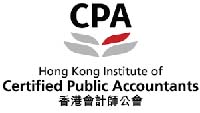Like any traditional tale woven by Wayang Kulit, the messaging from the recent G20 meeting in Nusa Dua looked straightforward enough whilst masking any number of mysteries still to be resolved.
The headlines were that:
- The International Partners Group, a group of wealthy nations led by the US and Japan (think of them as the G5), launched its Just Energy Transition Partnership under which they would provide $20 billion of funding to Indonesia to help it move away from its current reliance on coal – fired power, progress to be measured against pledges by Indonesia to i) cap annual CO2 emissions from the power sector at 290 megatons by 2030 (seven years earlier than previously) ii) be producing 34% of that power from renewables by the same year iii) have the whole power sector hit net zero by 2050.
- The ADB signed an MOU with Cirebon Electric Power to close its 660 MW Cirebon 1 coal – fired plant on Java perhaps 15 years earlier than otherwise. CEP is an IPP owned by Marubeni (Japan), Korea Midland, Samtan (both Korean) and Indika (Indonesia). PLN signed too as the current PPA runs until 2042, as did the sovereign Indonesian Investment Authority. The associated debt facility might be $250 – 300 million.
- Rather than a mere MOU, an unheralded financing had actually been signed earlier in the month in the Philippines whereby ACEN Renewables sold its 244 MW coal – fired South Luzon plant to a group of local institutional investors who agreed to close it by 2040, 15 years ahead of the end of its useful life. ACEN had just releveraged its investment so as to take out one last dividend to be invested in its renewables portfolio.
The so – called Energy Transition Mechanism was an idea put to the ADB, and no doubt its counterparts elsewhere in the world, a year ago. It calls for funding of two stapled facilities i) one to finance the early retirement of coal – fired power plants ii) the other to finance building renewable capacity to replace this.
Hailing the Cirebon MOU as a Landmark may have been hubristic but talking about specific transactions as opposed to general declarations of intent is a welcome step towards concrete progress. But as I wrote here and here last year, there are key issues with ETMs and these all remain:
Who bears the pain of prematurely closing a profitable asset? (The ACEN deal was a local deal and the Philippines market is more comfortable with risk in the power sector than most other countries so is unlikely to be replicable at scale elsewhere.) The US Treasury blithely forecast that $10 billion of the $20 billion would come from the private sector led by Mark Carney’s Glasgow Financial Alliance for Net Zero Private Sector Finance but banks owe it to their shareholders to take only commercial risk (the likes of Citi and BofA won’t take much of that in the power sector anyway) – see here.
So, the pain needs to be borne by the non – commercial players, namely the multilateral agencies such as the ADB and governments, both donor and donee (in the case of Indonesia, perhaps via the recently established sovereign wealth fund INA), When it’s their own money, the multilaterals like to provide debt alongside, and in certain circumstances even ahead of, commercial banks. The world doesn’t need another commercial bank. Instead, they need to to take first – loss risk. Thus, in June, the ADB set up an ETM Partnership Trust Fund with money from Japan; and it will administer funds from the Climate Investment Fund’s Accelerating Coal Transition program. These early steps are therefore welcome although vastly more will be needed.
ETMs would change the energy mix of a country but not increase its aggregate capacity (which, in that it was then more intermittent, would be more difficult to manage). Few developing countries currently have sufficient generation capacity so retiring what little they have would, prima facie, be unattractive.
Except in terms of planning the reconfiguration of the transmission network or unless the second leg of an ETM subsidises the first, the two arms of the ETM are distinct activities. This was clear in the ACEN deal. Financing new renewables capacity – and the grid upgrade and fossil fuel back – up generation capacity necessary to support these – should be happening anyway.
As has long been the case, the government’s inability to bring forward bankable projects and find parties willing to take the non – commercial risks therein, has long been a blockage to deal flow. As the earlier, very different, $8.5 billion JETP signed with South Africa has demonstrated, a combination of government ineffectiveness and resistance from a powerful coal lobby can stall progress. It is surely no coincidence that the first Indonesian ETM comes from the private sector rather than from PLN.
So, how to make ETMs happen?
- First, governments need to streamline / speed up the process for identifying / approving / developing opportunities for renewable generation, building suitable back up and storage facilities and upgrading national and local grids to handle supply which is then going to be much more intermittent – all of which should be being done anyway.
- Second, in that retiring otherwise profitable assets early constitutes absolute loss, spread this pain as thinly as possible across all parties which are advocating doing so. These are the governments in developing economies, those in developed ones, the multilaterals and even the private sector. This pain can take many forms: taking first loss positions, earning lower rates of return, offering longer tenors, taking responsibility for clean – up / other termination costs, tax credits, repurposing existing assets (e.g. AGL’s plan to turn a disused coal mine in NSW into a pumped storage scheme), the list goes on. All require i) a collective purpose ii) careful delineation of risk and responsibility iii) the introduction of flexibility such that government support, in particular, can be allocated then recycled once it is no longer needed.
- Third, host governments should go after all the concessionary finance they can get. Funds available will be nothing like as much as needed so this will be a clear case of the early bird getting the worm. This was one of the lessons learned from the astonishing turn around as Phnom Penh Water emerged from civil war, as related by the indefatigable Ek Sonn Chan when we met a while back. In order to do so, though, you need to be ready to go – see point 1 above!
- Fourth, focus on making such deals replicable rather than painstakingly renegotiate each deal anew. Let’s cut cookies! Thailand has managed it with a slew of gas – fired IPPs these past few years.
Logie Group has advised on comparable structurings when the MOF, Bappenas and the Ministry of Public Works in Indonesia were setting up the likes of the IIGF, SMI and a PPP unit so as to best navigate wildly different appetite from the outside world – and can do so again.







